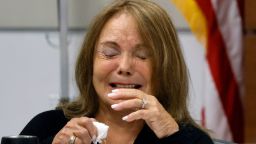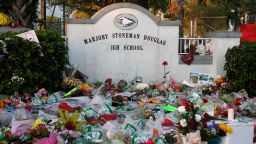Jurors in the sentencing phase of the Parkland, Florida, school shooter’s trial on Thursday visited the scene of the massacre at Marjory Stoneman Douglas High School’s 1200 building, which has been sealed since the attack on February 14, 2018.
They saw bloodstains where the victims were shot and killed, according to a group of reporters allowed to enter after jurors completed their walk-through. Valentine’s Day gifts and cards littered the scene, and bullet holes were in the walls. Fragments of broken safety glass lay everywhere, the reporters wrote, crunching beneath their feet.
The visit, Judge Elizabeth Scherer explained to jurors Wednesday, was meant to help them analyze the evidence presented so far in the trial of Nikolas Cruz, who faces either the death penalty or life in prison after pleading guilty to 17 counts of murder and 17 counts of attempted murder.
The state rested its case Thursday afternoon, after jurors returned from the visit and prosecutors called several more witnesses to offer victim impact statements.
Pool footage taken from outside the building Thursday showed it remained fenced off, hidden in part behind banners that carried the high school’s name and the emblem of its eagle mascot. The judge, prosecutors and defense attorneys were also seen entering the building.
Jurors were instructed Wednesday to “avoid touching, manipulating or moving anything.” The judge also told them to explore the scene on their own and at their own pace, moving as a group from floor to floor. Cruz did not attend the visit, telling the judge Thursday morning in response to her questioning that it was his decision not to go.
“Nothing will be explained or pointed out to you,” the judge’s instructions said. Jurors were also told to avoid speaking to anyone until the viewing was complete.
On the first floor, there was dried blood outside room 1215 where three students were killed, per the reporters who went inside. In room 1214, a Holocaust studies class, were two yellowed copies of the Sun-Sentinel newspaper. Bullet marks marred the desks, and laptops sat open.
In room 1216, a blue folder with Alaina Petty’s name sat on a desk, the reporters wrote. Bullet holes were seen in the wall, and the reporters noted a handwritten paper about Pakistani education activist Malala Yousafzai, who was shot by the Taliban for advocating for educational access for girls and women.
“We go to school every day of the week and we take it all for granted,” one student wrote. “We cry and complain without knowing how lucky we are to be able to learn.”
On the second floor, in room 1230, the reporters saw a heart-shaped box of Valentine’s Day chocolates. In room 1232, there were calculators still on school desks and open spiral notebooks where students were doing algebra.
Bloodstains from more victims were seen on the third floor, they wrote, along with bullet scrapes along the wall and bullet holes in windows. In room 1255, the white board read, “How to write the perfect love letter” – the creative writing assignment for the day. In 1249, the reporters saw an unfinished chess game.
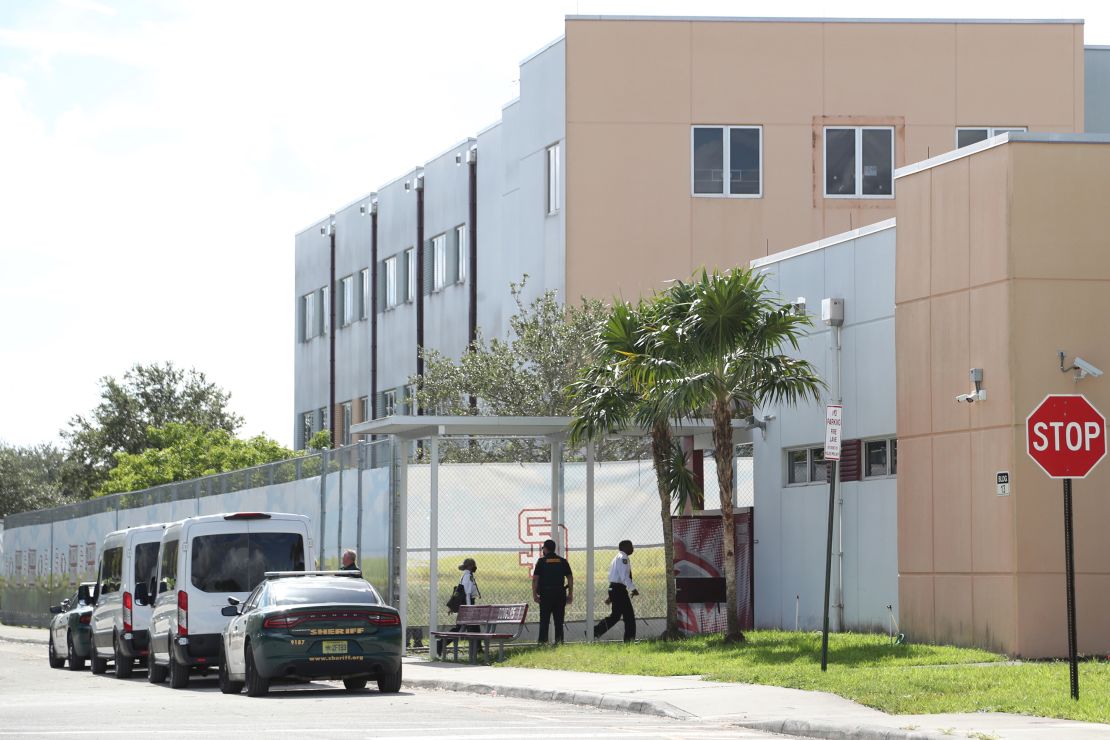
Patricia Oliver, mother of victim Joaquin Oliver, told CNN that she hoped “emotions” would be the jurors’ main takeaway after visiting the building Thursday, which would have been her son’s 22nd birthday. The building was closed to preserve it for the trial. Officials have said it will be torn down.
“We were, of course, knowing that this moment will arrive. It’s a moment that is part of a process,” said Manuel Oliver, Joaquin’s father, now an activist and organizer who addresses gun violence. “The most important thing here is what happened to our son, the way he suffered that day and what are we capable of doing after that. That’s what really matters here.”
Jurors were not allowed to have a smartphone, smartwatch or any type of camera during the viewing. In court, attorneys encouraged the judge to ask jurors to wear closed-toe shoes because they could encounter glass on the floor.
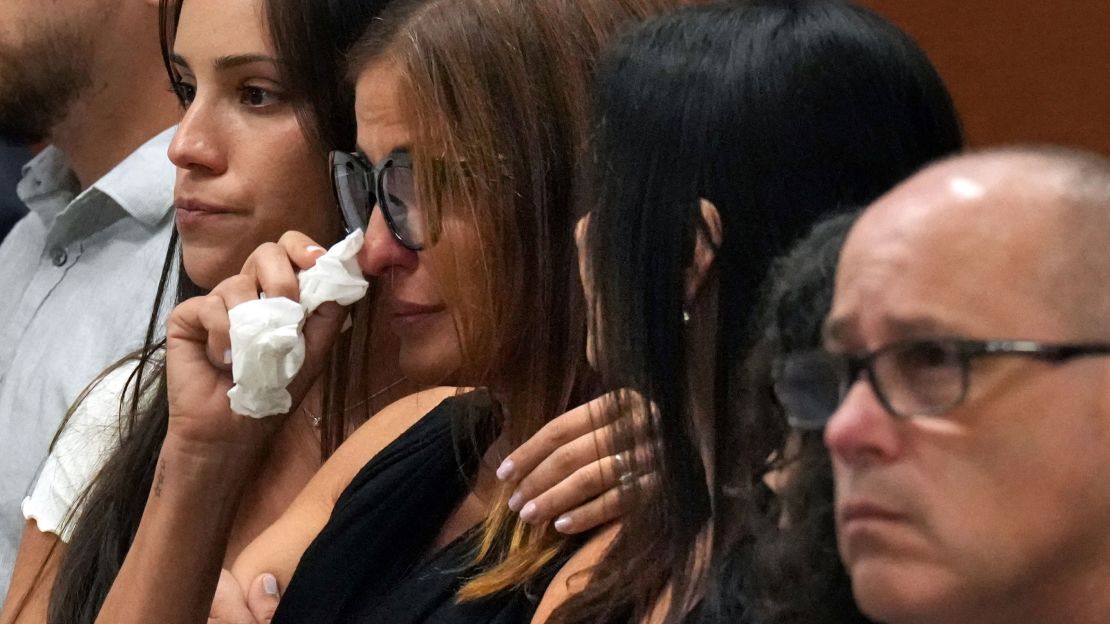
‘I can’t truly be happy if I smile,’ victim’s father testifies
The current phase of the trial is to determine Cruz’s sentence: Prosecutors are seeking the death penalty, while Cruz’s defense attorneys are asking the jury for a sentence of life in prison without the possibility of parole. To recommend a death sentence, jurors must be unanimous. If they do so, the judge could choose to follow the recommendation or sentence Cruz to life instead.
Following the visit, more victim impact statements were presented in court, with more of the victims’ families taking the stand to testify about the toll of the massacre and what their loved ones’ deaths have meant for them.
“I just can’t seem to really enjoy anything the way that I used to,” said Debra Hixon, the wife of athletic director Chris Hixon, who died trying to disarm the gunman. “The house that we shared doesn’t feel like the home that we built, because home meant Chris.”
Anne Ramsay, mother of 17-year-old victim Helena Ramsay, remembered her daughter as a beautiful and graceful young woman – someone who was naturally athletic but who preferred exercising her mind to competitive sport. She loved watching “Jeopardy!”
Helena was killed on her father’s birthday, Anne Ramsay said. “That day will never be a celebration, and can never be the same for him,” she said, “and now is filled with pain, as is every day.”
In a statement read by her niece, Hui Wang, the mother of Peter Wang, a 15-year-old shot as he held open a door to help his classmates get to safety, recalled how he was killed just before Chinese New Year, robbing the family of their most treasured holiday.
“We no longer decorate our house or host feasts on the most important holiday in our family. It is now Peter’s death anniversary,” the statement, read by Wang’s cousin Lin Chen read. “This day of unity became a day that hurts the most.”
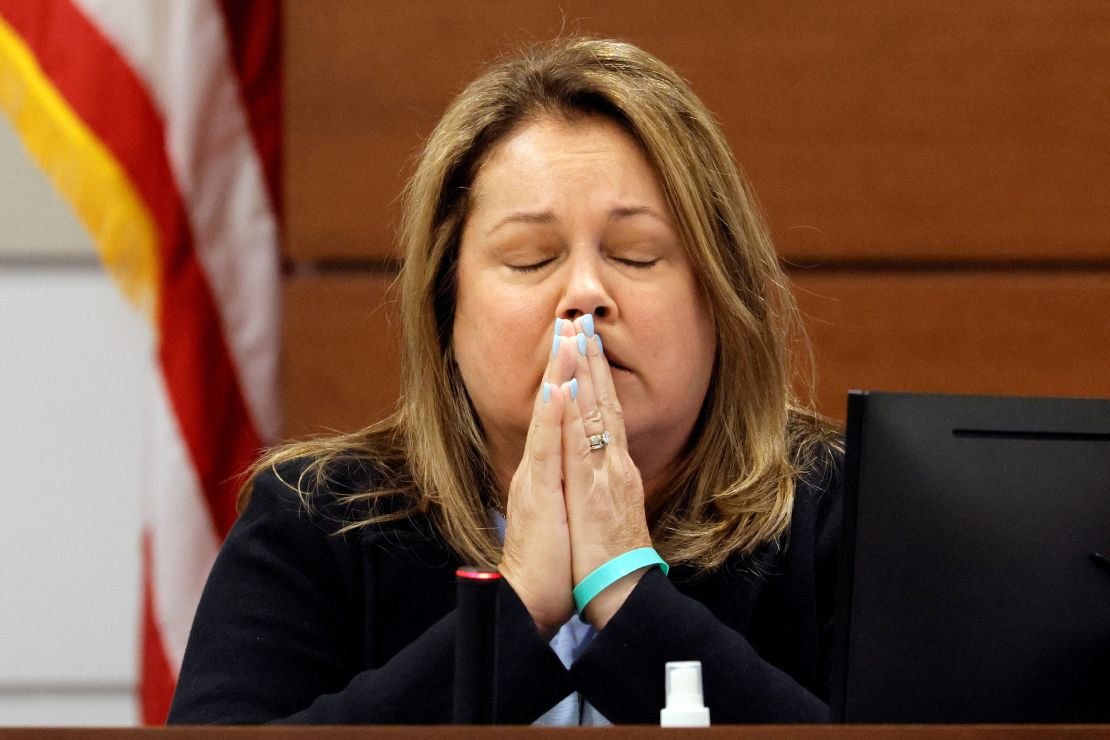
Much of the testimony in the Broward County court this week – particularly from the parents of the 14 students killed – has focused on all the things the victims and their families will never get to do and the irreparable damage to their everyday lives.
“Our family is broken. There is this constant emptiness,” said Max Schachter, the father of 14-year-old Alex, who loved chocolate chip cookies, playing the trombone and video games.
“I feel I can’t truly be happy if I smile,” Schachter said Wednesday. “I know that behind that smile is the sharp realization that part of me will always be sad and miserable because Alex isn’t here.”
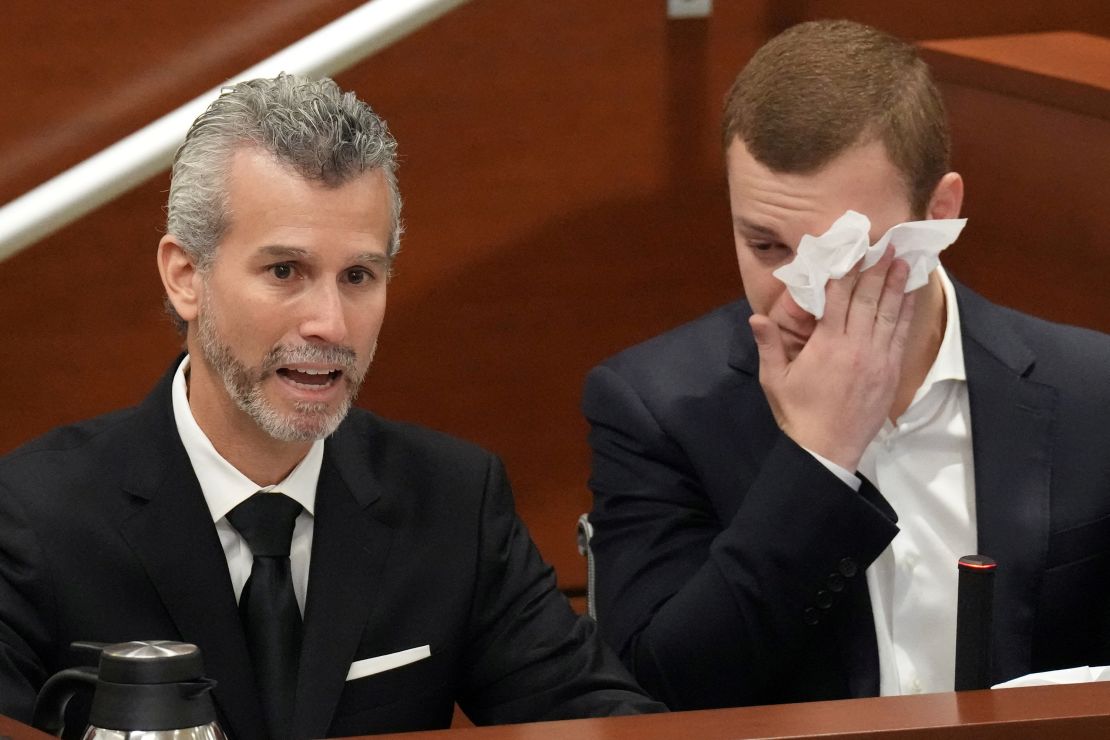
The loss of her daughter Meadow Pollack, 18, has “destroyed” Shara Kaplan’s life, she told the jury Tuesday, “and my capability of ever living a productive existence.” To articulate how her daughter’s death impacted her, she said, she would have to rip out her heart and show them how it had shattered into a million pieces.
And the Hoyer family will never be the same. “We were a family unit of five always trying to fit into a world set up for even numbers,” said Tom Hoyer, whose 15-year-old son Luke – the youngest of three – was killed. “Two-, four-, six-seat tables in a restaurant. Two-, four-, six-ticket packages to events. Things like that.”
But the Hoyers are no longer a family of five, and “never again will the world feel right, now that we’re a family of four,” Hoyer said.
“When Luke died something went missing in me,” he said. “And I’ll never, never get over that feeling.”
To make their sentencing decision, jurors will hear prosecutors and defense attorneys argue aggravating factors and mitigating circumstances – reasons Cruz should or should not be executed.
The victim impact statements add another layer, giving the families and friends of the victims their own day in court, though the judge told the jury the statements are not meant to be weighed as aggravating factors.
CNN’s Sara Weisfeldt and Leyla Santiago contributed to this report.


